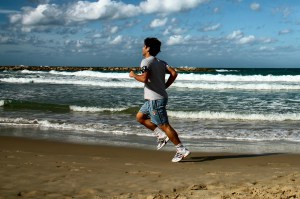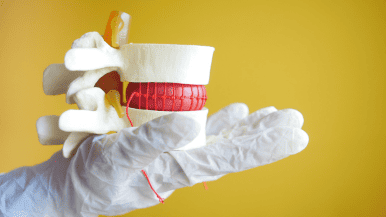Did you know the surface a runner chooses to run on can have different effects on their body?
Running on hard surfaces can sometimes lead to more stress and result in injuries like inflation in the achilles tendon, shin splints and stress fractures in the small bones of the foot or ankle. Running on soft surfaces can lead to injuries, such as a twisted ankle or knee, due to the irregularities of the ground and the runner attempting to compensate for them.
To help runners determine which surface may be best for them, here are the pros and cons to different types of running surfaces.
Asphalt

Pros: Asphalt is typically soft and level making it one of the better running surfaces. It also puts less strain on the Achilles tendon.
Cons: Asphalt puts some strain on the body as it doesn’t absorb all of the shock that travels through a runner’s body. It can aggravate the shins more and can cause stress fractures.
Concrete
Pros: Concrete surfaces are smooth and regular. This will allow a runner to develop a rhythm.
Cons: Concrete is the least forgiving of running surfaces, according to Timothy Noakes, author of “Lore of Running.” When running on concrete, the ground doesn’t absorb any of the shock that travels through a runner’s feet, knees, hips and lower back. This can lead to an increased injury risk. Concrete should typically be avoided when possible.
Grass
Pros: Running on grass will likely cause little discomfort because it has a low impact. It will also make a runner’s legs work harder compared to running on a track, therefore creating small improvements in leg strength.
Cons: While not the worst running surface, grass will still cause a 25 percent greater shock to the body than running on asphalt, according to a study in “Human Movement Science.” It can also be uneven and slippery when wet.
Sand

Pros: Sand has a minimal force of impact on joints while running. It also makes legs work harder compared to running on a track.
Cons: Running on soft sand can increase the risk of an injury to the Achilles tendon. It can also lead to a twisted ankle or knee if the sand is unstable. If sand is sloped, it may cause uneven stresses on the body.
Rubber Track
Pros: Rubber tracks are less likely to generate stress fractures than asphalt or concrete.
Cons: The long curves on a track can put ankles, legs, knees and hips under more stress.
What Surface Do You Run On?
Are you an avid runner? What surface do you prefer to run on? Leave us a comment and let us know.



